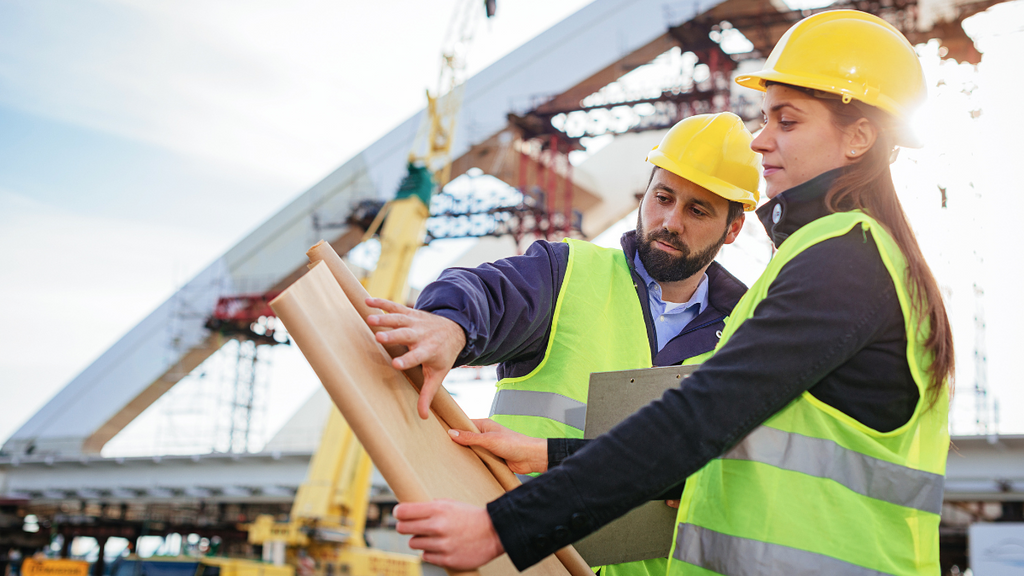Things about Geotheta
Things about Geotheta
Blog Article
How Geotheta can Save You Time, Stress, and Money.
Table of ContentsThe Basic Principles Of Geotheta The 15-Second Trick For GeothetaIndicators on Geotheta You Need To KnowWhat Does Geotheta Mean?Geotheta Fundamentals Explained

They conduct site investigations, gather examples, perform laboratory tests, and examine information to examine the viability of the ground for construction projects - Engineer of Record. Based upon their findings, geotechnical designers offer referrals for foundation design, slope stability, keeping frameworks, and reduction of geotechnical threats. They team up with other experts, such as designers, architectural engineers, and building groups, to make certain that geotechnical factors to consider are incorporated into the overall task layout and implementation
By evaluating the actions and residential or commercial properties of dirt and rock, they can identify potential geotechnical threats such as landslides, soil settlement, or slope instability. Their proficiency helps avoid failures or accidents that can endanger lives and building. Here are some thorough tasks and responsibilities of a geotechnical designer: Website Investigation: Geotechnical engineers conduct site investigations to collect data on subsurface conditions.
They interpret the information to understand the residential or commercial properties and habits of the soil and rock, including their strength, leaks in the structure, compaction qualities, and groundwater problems. Geotechnical Analysis and Design: Geotechnical designers evaluate the information collected throughout site examinations to examine the security and viability of the site for construction jobs. They perform geotechnical computations and modeling to review elements such as bearing ability, negotiation, slope security, lateral earth stress, and groundwater flow.
See This Report on Geotheta
Foundation Style: Geotechnical engineers play a vital function in developing foundations that can safely sustain the desired framework. They analyze the dirt conditions and load needs to figure out the proper foundation kind, such as superficial foundations (e.g., footings), deep foundations (e.g (https://www.openlearning.com/u/ianhammond-shld0k/)., piles), or specialized strategies like dirt renovation. They think about elements such as settlement restrictions, bearing ability, and soil-structure interaction to create optimal structure styles
They review construction strategies, monitor website tasks, and conduct field evaluations to validate that the design referrals are adhered to. If unpredicted geotechnical issues emerge, they assess the situation and supply recommendations for removal or modifications to the style. Risk Evaluation and Mitigation: Geotechnical engineers evaluate geotechnical hazards and dangers connected with the project website, such as landslides, liquefaction, or soil disintegration.

Cooperation and Communication: Geotechnical engineers function very closely with various other specialists associated with a task, such as engineers, architectural designers, and building and construction teams. Reliable interaction and partnership are vital to integrate geotechnical considerations into the total task style and building process. Geotechnical designers give technical know-how, answer inquiries, and ensure that geotechnical requirements are fulfilled.
5 Simple Techniques For Geotheta
Below are some kinds of geotechnical designers: Foundation Engineer: Structure designers specialize in creating and analyzing foundations for frameworks. They evaluate the soil problems, tons demands, and website qualities to establish the most appropriate foundation kind and design, such as superficial structures, deep structures, or specialized techniques like pile foundations.
They review the factors influencing slope stability, such as soil residential or commercial properties, groundwater conditions, and slope geometry, and create techniques to stop slope failings and minimize threats. Quake Engineer: Earthquake engineers focus on assessing and creating structures to hold up against seismic forces. They analyze the seismic hazard of a website, review dirt liquefaction capacity, and develop seismic style standards to ensure the security and strength of frameworks throughout quakes.
They carry out field screening, collect examples, and examine the gathered information to identify the soil properties, geologic developments, and groundwater here conditions at a website. Geotechnical Instrumentation Engineer: Geotechnical instrumentation engineers concentrate on tracking and gauging the actions of soil, rock, and frameworks. They set up and keep instrumentation systems that monitor elements such as soil negotiation, groundwater degrees, incline activities, and structural displacements to assess performance and give very early cautions of possible issues.
Geotheta Can Be Fun For Anyone
They perform examinations such as triaxial tests, combination examinations, direct shear tests, and leaks in the structure tests to collect information for geotechnical analysis and style. Geosynthetics Designer: Geosynthetics engineers concentrate on the layout and application of geosynthetic materials, such as geotextiles, geogrids, and geomembranes. They use these materials to enhance dirt stability, enhance slopes, provide drainage options, and control erosion.
They have a tendency to be investigative people, which implies they're intellectual, reflective, and investigative. They are interested, systematic, reasonable, logical, and rational. Some of them are likewise social, indicating they're kind, generous, cooperative, person, caring, useful, empathetic, sensible, and pleasant - Tailings Engineer.
In the office environment, geotechnical designers make use of specialized software devices to execute calculations, create layouts, and examine data. They prepare records, testimonial task specs, communicate with clients and employee, and coordinate task activities. The office setting supplies a favorable atmosphere for research study, analysis, and collaboration with various other experts included in the project.
The smart Trick of Geotheta That Nobody is Talking About
They regularly see job websites to carry out site examinations, evaluate geotechnical problems, and collect data for evaluation. These brows through involve taking a trip to various locations, often in remote or tough terrains. Geotechnical engineers may execute dirt tasting, conduct tests, and display building tasks to ensure that the geotechnical facets of the task are being executed appropriately.
Geotechnical designers likewise function in specialized geotechnical research laboratories. Geotechnical laboratory engineers function thoroughly in these settings, handling testing equipment, operating instruments, and taping information.
Report this page